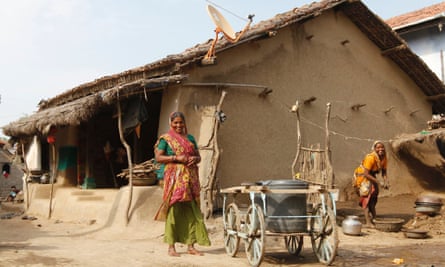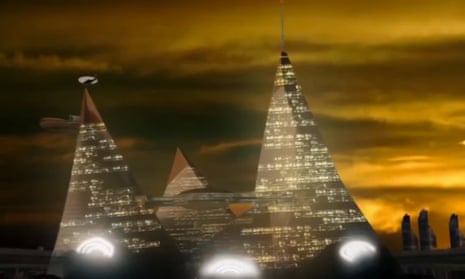Imagine yourself in an Indian city where every home is connected to internet, gas, water and electricity via a smart grid. All citizens are linked to each other and to civic facilities in real time. The city uses renewable energy and its transport systems are controlled via central command centres to reduce traffic and pollution. In this city, there are no offensive smells, no noise, no dust, no heaving crowds. It is a smart city, the ideal city.
And it exists: on paper. Its name is Dholera, and it is a key part of what you might call India’s 21st-century utopian urban experiment. Economists argue that the country desperately needs new cities: its urban population is expected to rise from 28% in 2001 to almost 36% in 2026, bringing the total number of people living in its cities and urban regions to 590 million.
To accommodate this growth, suggests a McKinsey report, India will need 20 to 30 new cities in the next decade alone. The state’s solution has been to push for 24 new "smart cities" along high-speed regional transport networks. Dholera is one of these. At 903 sq km, it would be twice the size of Mumbai. It is planned in the "influence zone" of a mega-infrastructure project, the Delhi-Mumbai industrial corridor, which will link India’s political capital Delhi with its economic capital Mumbai, and therefore, so the thinking goes, spur economic growth in the region.
The Dholera that actually exists, however, is something else entirely. A casual visitor might see the small sign along the highway pointing in the direction of Dholera. But they might also, if they take the turn-off, be disappointed: for several months of the year, they will find a vast, low-lying area, mostly submerged under seawater. The rest of the year, they will see the classic cracked-earth look of salt flats. Dotting this landscape are farm buildings, village huts and small reservoirs storing rainwater that is used to irrigate fields of cumin, millet, wheat and cotton. They will see a vast landscape with about 40,000 people living in an ecological region that loses 1cm of its coastline to the sea every day. They might then understand that Dholera is not yet a "place": it is still a terrain of possibilities.
Yet these possibilities loom large in the future of Indian urbanisation, which is expected to provide the country with its planned economic growth of 9%. Dholera was mentioned in the Indian finance minister’s budget speech in 2013 as one of the state's key investments to induce growth along the Delhi-Mumbai corridor – and indeed, Dholera will play an important role in the Indian elections currently unfolding across the country.
The chief minister of the regional state of Gujarat, Narendra Modi, is running for prime minister. He has declared Dholera and other proposed smart cities in the region to be "building blocks of a global Gujarat", envisioned on the lines of Shanghai. And to make sure it happens, he shepherded in a new Special Investment Region (SIR) Act in March 2009. The act gives more power to the state to acquire land for building smart cities like Dholera. Many locals see it as a way to bypass India’s Land Acquisition Act, with its pesky mandatory requirements of consent and compensation.
Indeed, the proposals for Dholera have sparked several protests. A grassroots movement for land rights called Jameen Adhikar Andolan Gujarat (JAAG) has been at the forefront: organising peaceful demonstrations against Dholera and other "smart cities" with farmers, activists and opposition leaders across the region.
JAAG has had some success, including the recent downsizing of another proposed industrial township nearby. But the state has taken notice. Police have been refusing permission for peaceful protests; JAAG members have been arrested during demonstrations. Matters came to a head in January during the public hearing and consultation over the environmental impact assessment of Dholera. Nearly 500 JAAG activists, environmentalists and farmers showed up to voice their concerns. They argued that the impact assessment included several instances of misinformation and factual misrepresentation. They claimed that Dholera will dispossess the area's small-scale subsistence and landless farmers.
Their complaints fell on deaf ears: the plans for Dholera were sanctioned. JAAG activists say this is likely to be the beginning of a protracted battle, even as urbanisation of the region appears inevitable: the ruling political party has already made huge investments in Dholera, and would lose face if it does not materialise.

Activists make other arguments against building Dholera. One is that the city faces a massive engineering obstacle, due to the high risk of flooding – meaning the final expense is likely to be much higher than what has been accounted for. Moreover, plans to build a seaport in Dholera have been shelved. Critics note that without the seaport, it will be very difficult for Dholera to become a global player, as it is port cities that will ultimately succeed in spurring trade and industrial growth. But the biggest blow thus far has been the recent withdrawal of major private investors after they defaulted on payments.
What then is the future of Dholera and other potential smart cities in India? Will Dholera even be built? Much of this depends on who wins the Indian general election.
One scenario is that the smart city of Dholera does get built, but only after a phenomenally high amount of state investment, inducing an economic crisis in the region. Faced with years of debt and austerity, Dholera over time proves unable to maintain its smart credentials. Its smart metering system is not upgraded, its smart networks malfunction, and the city falls back upon conventional forms of city governance that are more ordinary than smart.
Another scenario is that Dholera is significantly downsized due to a lack of investors and stripped of its "smart" credentials, to become just another industrial township along the Delhi-Mumbai corridor. It becomes one of those backdoor cities to India’s urbanisation and economic growth, where polluting industries are located to keep them away from Delhi and Mumbai. It remains, in other words, a far cry from the smart city presented in the glossy marketing images.
The final scenario is that the Dholera smart city project is abandoned. Instead, the investment previously ringfenced for it is used to improve soil fertility, provide water for agricultural irrigation and empower farmers in the region to become self-sufficient. This is what those farmers hope for: a victory in their fight against land grabs, the loss of their livelihoods and eviction from their traditional homes. In a neoliberal state, this might seem a utopian social dream. But JAAG activists see it as social and environmental justice, and say they will continue to fight peacefully to make this unlikely scenario a reality. For some Indians, the only way Dholera can be a smart city is if it never gets built at all.
Ayona Datta is a senior lecturer at the University of Leeds

Comments (…)
Sign in or create your Guardian account to join the discussion